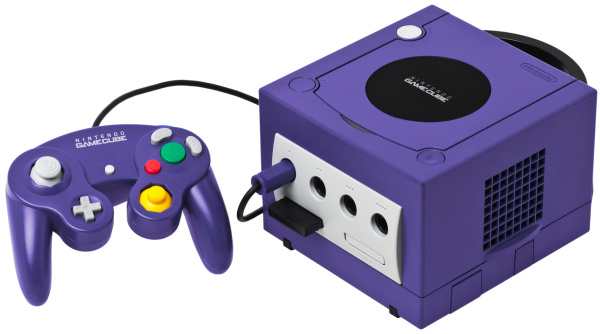David Hayward recalls a wonderful console from the noughties
In between the Nintendo 64 and the Wii, there was, in my opinion anyway, the best Nintendo console ever released: the GameCube.
This odd looking, purple paint job, lunch box carry handle console was powered by a 500MHz PowerPC processor, had 43MB of memory and a 162MHz ATI Flipper GPU with 3MB of memory on chip. It was amazing. And with it came some of the best Nintendo based games I had ever played.
Assault, Tales of Symphonia, Soul Calibur 2, Resident Evil 4, Metroid Prime and of course The Legend of Zelda: Wind Walker. In fact, as soon as I’m done with this article, I’m off to plug my GameCube back in and get some gaming done.
Its History
The history of the GameCube can be traced back to 1997, when a team of former N64 engineers formed a company called ArtX. This company was to begin development of a new GPU, called Flipper, for the next generation of Nintendo consoles.
Project Dolphin, which was the GameCube, was announced in 1999, with developer units being sent out and the PR wheels being substantially greased ahead of a launch in a few years’ time.
By mid 2000, ATI had acquired ArtX and continued the development of the GPU, even though it was mostly already complete. In conjunction with ATI, software developer Factor 5 had started working on the software that would work with an early motion controller prototype. However, after some difficulty in getting the software and hardware married up correctly in time for the launch of the GameCube, the motion controller was delayed until the next generation of Nintendo console, the Wii.
Despite the console being released in Japan in September 2001, selling 500,000 units on the first day, and overall selling 22 million units worldwide, the GameCube wasn’t the financial success Nintendo was hoping for.
In an age where the PlayStation 2 was already reaching the 100 million mark, the poor GameCube was left on the shelves to gather dust while gamers mostly enjoyed PES on the PS2 or Halo on the Xbox. Perhaps if the N64’s lifespan was shortened to get the GameCube out a little earlier, it may have had a better chance. Also, it might have done better if it wasn’t seemingly aimed at younger gamers, rather than also appealing to more mature customers.
In short, it never reached its full potential. The gamers of the time had grown up through the 80s and 90s and were now after the adrenaline-fuelled combat games of the higher-specified platforms, PC included. As a result, the GameCube was quietly put to one side while work on the Wii started, with the launch in 2006.
The Good
Amazing games, great graphics and a decent controller too.
The Bad
Poor marketing, younger console image, dodgy laser and a carry handle that caused a dodgy laser if you put it down too hard.
Conclusion
Although it didn’t quite succeed as much as Nintendo had hoped for, the GameCube has a special place in the hearts and minds of those of us who stayed up late to get through Super Smash Bros.
So for that alone, we thank you, Nintendo.
Did You Know?
• The wireless WaveBird controller is the prototype for the Wii controller, although it didn’t work too well on the GC.
• In Donkey Kong 64 (for the N64) there’s an unlockable video where there are auditions for Project Dolphin (the future GameCube).
• Apparently, the GC was easy to develop on, and it was pretty cheap to make as well
• The storage format was mini discs, which only had a 1.5GB capacity, hence why many games like GTA3 were never released – and why it had awful cut-scenes.
